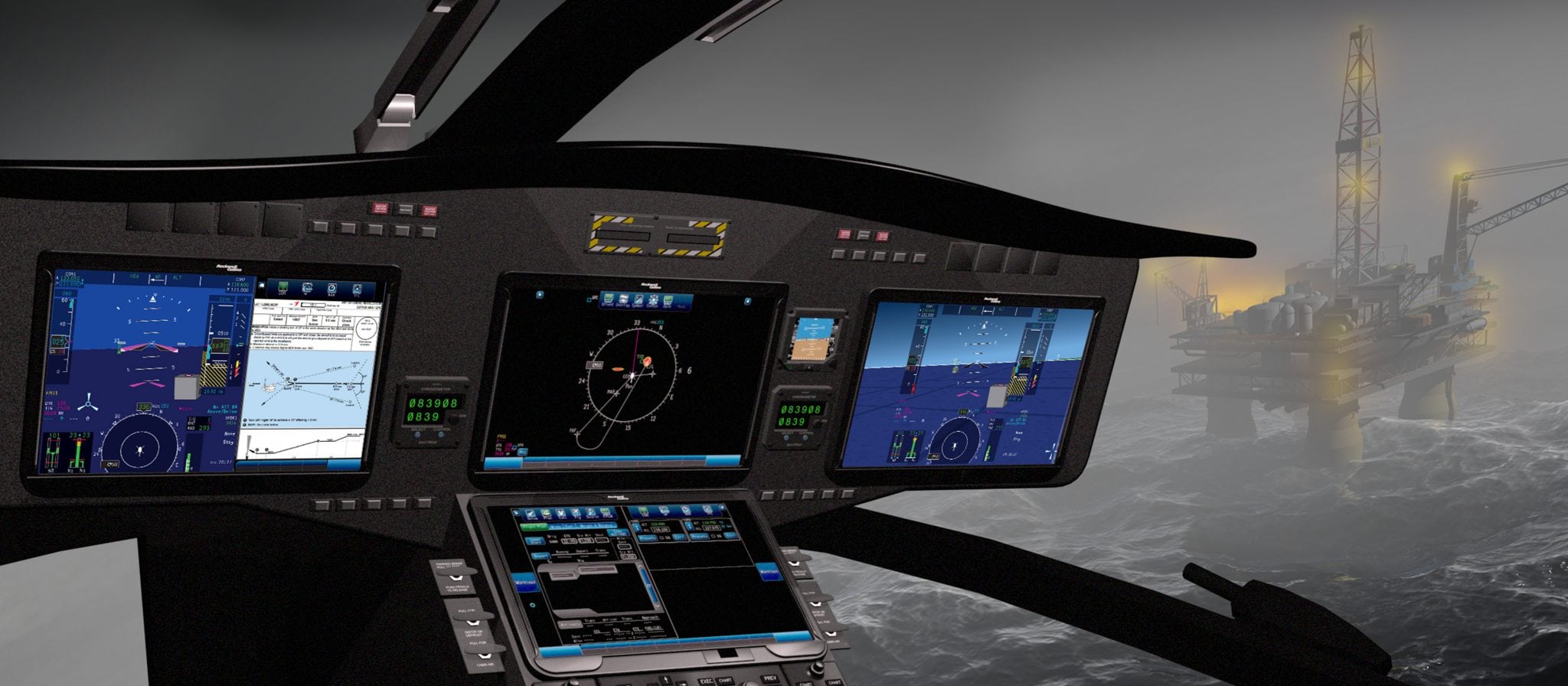[Avionics Today 03-03-2015] The Pro Line Fusion is one of the most popular integrated avionics platforms in fixed wing airframes. Now, Rockwell Collins is bringing the system to the commercial helicopter market, displaying a flyable mock version with prototype software at Heli-Expo 2015 in Orlando, Fla. This transfer requires development of the system to handle a wider range of missions than it currently does in fixed-wing operations.
 |
| Pro Line Fusion for the rotary wing market. Photo: Rockwell Collins. |
“We’re adapting the [Flight Management System] FMS capabilities in Pro Line Fusion to incorporate all of the helicopter flight and mission function that we’re very familiar with from the years we’ve been involved in helicopters on the government side,” Andre Jetton, manager of strategy and business development for civil helicopters at Rockwell Collins, told Avionics Magazine. “It’s much less taking a fixed-wing system and changing that for helicopters. It’s more about taking the innovation in the Pro Line Fusion design and architecture and philosophy and putting that on top of a lot of our existing FMS and mission management capabilities.”
Pro Line Fusion has already proven its flexibility in the fixed-wing market. Since Rockwell Collins first launched the platform at the National Business Aviation Association (NBAA) industry show in 2007, the integrated avionics system has been selected for 17 different aircraft, including a tilt rotor aircraft that has fixed wing and rotary wing capabilities. It is primarily a software-based architecture, and a networked and modular-based system, which makes it easier to introduce different functionality without disrupting the highly integrated system already in place.
Rockwell Collins will face some tough competition in brining its Fusion platform to the civil helicopter market. Garmin first launched its G5000H integrated avionics platform for medium lift helicopters in 2012. Honeywell’s Primus Epic flight deck also has widespread adoption in the market. There are also competitive products currently still in the development stage, including Universal Avionics’ Next Generation Flight Deck optimized for light twin helicopters and the Thales 2020 — the first full touchscreen integrated flight deck designed for a rotorcraft cockpit, scheduled to make its debut later this decade.
That level of flexibility in Pro Line Fusion should lead to the system garnering the same level of widespread adoption in the helicopter market as it has in fixed wing. Helicopters typically fly at lower attitudes, often in Degraded Visual Environments (DVEs) and turbulent flight conditions, requiring avionics systems with a higher level of software certification and more robust Line Replaceable Units (LRUs) for the vibration environment.
Prior to bringing the Pro Line fusion to the helicopter arena in 2015, Rockwell Collins’ research and development team was already testing even more advanced capabilities for the system. In the fall of 2014, a collaboration between the Rockwell Collins Advanced Technology Center and Iowa College of Engineering Operator Performance Laboratory demonstrated the ability of the Pro Line Fusion to be used as a ground control station for Unmanned Aircraft Systems (UAS). During the demonstration, a reconfigured Pro Line Fusion box used a certified digital communications link to securely communicate flight commends to an optionally piloted Beechcraft Bonanza.
Pro Line Fusion is bringing this same level of flexibility to helicopters, providing operators with the ability to establish mission-specific operational profiles, including offshore platform approaches, hover in place, Search and Rescue (SAR) and other mission-critical scenarios.
“You have to change some of the [Primary Flight Display] PFD formats, engine optics, to make it look and feel as if you’re in a helicopter cockpit because you’re flying differently,” said Jetton. “Another change revolves around how we implement the Fusion [Human Machine Interface] HMI, which is an approach to designing avionics around the pilot’s phase of flight and the tasks they’re trying to do at any point and time, versus around control of different LRUs. Realizing pilots fly helicopters much differently than fixed wing aircraft, when and how they use touch screens versus a traditional knob or push button control is critical. We’re working on adapting the HMI design to match that different operating environment.”